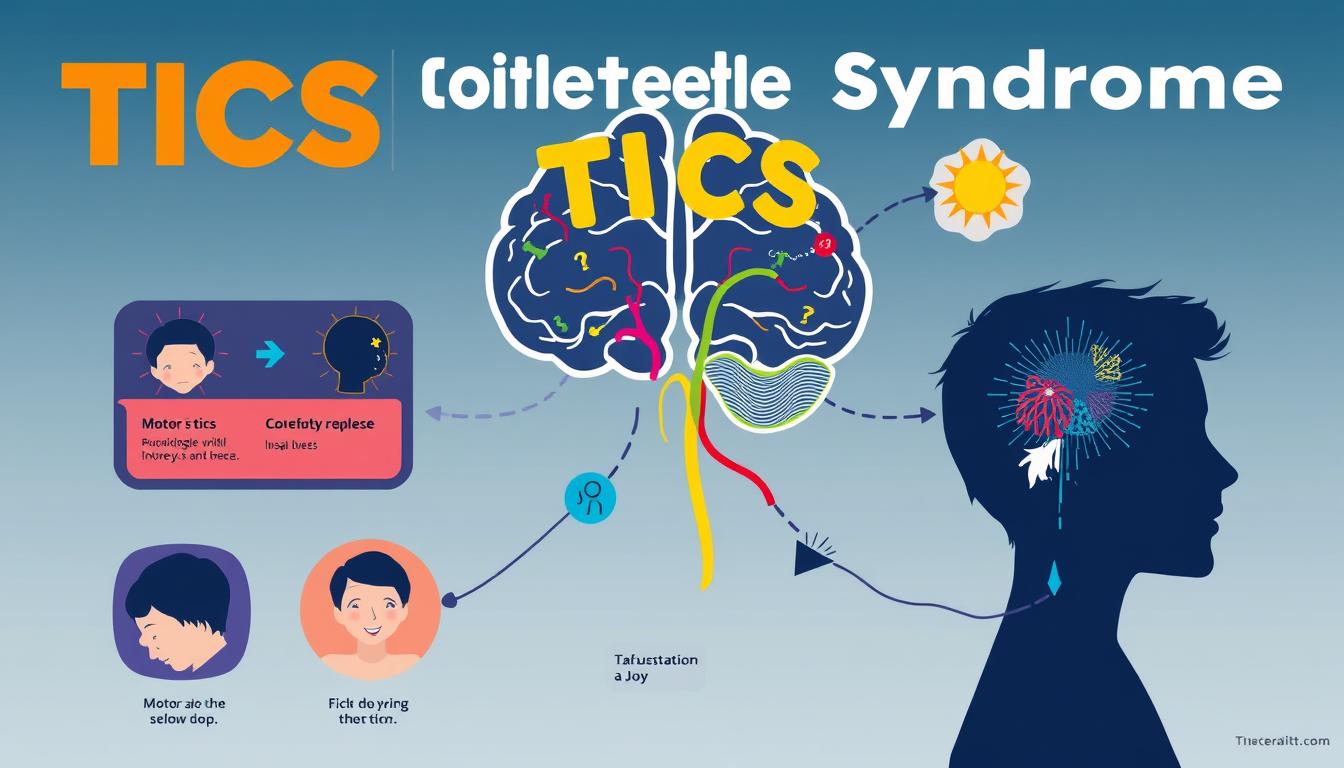Understanding mental health in teens is complex. Borderline Personality Disorder in Adolescents is a key area of study. It needs our care and attention.
Teen years are tough, but for those with Borderline Personality Disorder, it’s even harder. We’ll look into how to spot, understand, and help teens with this condition.
This guide aims to illuminate the world of teen mental health. It offers expert views and practical tips for families, teachers, and doctors. They all play a part in helping teens with emotional challenges.
Key Takeaways
- Borderline Personality Disorder significantly impacts teenage emotional development
- Early recognition is key for effective help
- Professional support is vital for managing symptoms
- Family support is essential in treatment
- Knowing triggers helps in finding coping strategies
What is Borderline Personality Disorder in Adolescents
Borderline Personality Disorder (BPD) is a big challenge for teens. It makes their emotions very complex, confusing parents and doctors. It’s not just about mood swings. It’s about deep emotional struggles.
Key Characteristics and Symptoms
Teens with BPD have intense emotions. They might:
- Change moods quickly, lasting hours or days
- Make impulsive decisions
- Worry a lot about being left alone
- Have unstable relationships
Diagnostic Criteria for Teens
Doctors use specific signs to diagnose BPD in teens. They look at many things, like how the teen feels and acts.
| Diagnostic Criteria | Description |
|---|---|
| Emotional Instability | Rapid and intense emotional shifts |
| Impulsive Behaviors | Risky actions without considering consequences |
| Identity Disturbance | Unclear sense of self and personal values |
Differentiating from Normal Teen Behavior
Not all mood swings mean BPD. Teens naturally go through ups and downs. But BPD is more serious, with deeper emotional struggles and unstable relationships.
“BPD is not just teenage drama—it’s a serious condition requiring professional understanding and compassionate intervention.”
Knowing the difference between normal teen behavior and BPD symptoms is key. It helps parents and teachers offer the right support and know when to get help.
Early Warning Signs and Risk Factors
Spotting early signs of Borderline Personality Disorder (BPD) in teens is tough. A big clue is identity disturbance. This shows up as quick changes in how they see themselves and unstable relationships.
Teens with BPD might act differently in many ways:
- They have intense and unpredictable emotions.
- They fear being left alone a lot.
- They swing between moods quickly.
- They act on impulse without thinking.
- They struggle to keep relationships steady.
Several things can increase the chance of getting BPD. Genetics, childhood trauma, and the environment all play parts.
| Risk Category | Potential Impact |
|---|---|
| Genetic Factors | Higher chance if family history shows it |
| Childhood Trauma | Makes them more likely to struggle with emotions |
| Neurological Differences | Brain differences can affect how they control emotions |
Knowing these signs helps start early help. Identity disturbance can show up as constant changes in goals, career dreams, sexual identity, or values. The deep fear of abandonment can lead to extreme reactions in social situations.
“Early recognition and compassionate support are key in managing BPD symptoms in teens.” – Mental Health Professionals Association
Parents and teachers should be understanding and look for professional help. This is the best way to support teens who might be struggling.
The Impact of Emotional Dysregulation on Teen Development
Emotional dysregulation is a big challenge for teens with complex mental health issues. It affects their mental health and how they grow up.
Understanding Emotional Triggers
Teens with emotional dysregulation face strong and unpredictable feelings. These feelings can come from many things, like:
- Feeling rejected or criticized
- Having fights with others
- Changes in their daily life
- Too much going on around them
“Emotional regulation is not about suppressing feelings, but understanding and managing them effectively.” – Mental Health Expert
Effects on Academic Performance
Emotional issues can really mess with school work. Students with emotional dysregulation might find it hard to:
- Stay focused
- Do well in school
- Go to school
- Participate in class
Social Relationship Challenges
Emotional dysregulation makes it hard for teens to make and keep friends. They might have trouble with:
| Relationship Aspect | Challenge |
|---|---|
| Peer Interactions | Intense emotional reactions |
| Communication | Difficulty expressing feelings appropriately |
| Trust | Unstable relationships due to emotional volatility |
It’s important to know these challenges. This helps us create support that helps teens deal with their emotions better.
Common Triggers and Environmental Factors
Understanding emotional dysregulation in teens with Borderline Personality Disorder (BPD) is complex. It involves looking at environmental triggers that make symptoms worse. Teens with BPD often feel more impulsive and emotionally sensitive when faced with certain external factors.

Our research shows several environmental triggers that affect emotional regulation:
- Family conflict and unstable home environments
- Traumatic experiences or childhood abuse
- Significant social rejection or bullying
- Major life transitions or unexpected changes
- Academic or social performance pressures
The level of emotional dysregulation can differ for each person. Knowing these triggers is key to finding effective ways to help.
“Environmental factors play a critical role in amplifying BPD symptoms in adolescents” – Dr. Sarah Roberts, Child Psychiatry Specialist
We’ve made a detailed list of how intense these triggers can be:
| Trigger Type | Emotional Impact | Impulsivity Risk |
|---|---|---|
| Family Conflict | High | Moderate to High |
| Social Rejection | Very High | High |
| Academic Stress | Moderate | Low to Moderate |
| Traumatic Experiences | Extreme | High |
By knowing and understanding these triggers, we can create support plans. These plans help teens manage their emotions and reduce impulsive actions.
Understanding Self-Harm and Suicidal Behaviors
Adolescent mental health is a big challenge, mainly with self-harm in teens with borderline personality disorder (BPD). Self-harm is a serious warning sign that needs quick attention and understanding.
Spotting signs of self-destructive behaviors can save lives for teens struggling with emotions.
Recognition of Warning Signs
- Unexplained cuts, bruises, or wounds
- Wearing long-sleeved clothing in warm weather
- Isolating from friends and family
- Dramatic mood swings
- Expressing feelings of hopelessness
Crisis Intervention Strategies
When self-harm risks show up, getting help from experts is key. Mental health pros suggest a mix of strategies for teens.
| Intervention Strategy | Key Actions |
|---|---|
| Professional Counseling | Individual and group therapy sessions |
| Psychiatric Assessment | Comprehensive mental health evaluation |
| Family Support | Education and communication training |
Safety Planning
Creating a detailed safety plan is vital to reduce self-harm risks. Our method is about making plans that help teens deal with tough emotions.
“Every moment of support can be a turning point in a teenager’s mental health journey.” – Mental Health Professional
Understanding what triggers self-harm and using specific help can guide teens through tough times with strength and hope.
The Role of Family Dynamics

Family dynamics are key in helping teens with Borderline Personality Disorder (BPD). Unstable family relationships can greatly affect a teen’s emotional and mental health.
Teens with BPD often fear being left behind. They might feel very upset when they think they’re being rejected or separated from family. This makes their relationships tricky to handle and understand.
“Understanding family dynamics is key to supporting adolescents with BPD and helping them develop healthier emotional connections.”
- Recognize patterns of emotional invalidation
- Develop consistent communication strategies
- Create a supportive and predictable home environment
- Validate the teen’s emotional experiences
Here are some important strategies for families:
- Learn to spot emotional triggers
- Practice active listening
- Set clear and caring boundaries
- Look for professional family therapy
Getting help from professionals can help families grasp the complex emotions of BPD. It also helps them improve communication and support.
We focus on creating a caring space. This space acknowledges the tough challenges of unstable relationships. It also offers steady emotional support. By getting to know the complex world of BPD, families can greatly help their teen’s healing and growth.
Treatment Options and Therapeutic Approaches
Helping teenagers with mental health issues needs a detailed plan. Mental health experts use many strategies to help them heal and grow.
Dialectical behavior therapy (DBT) has grown a lot in helping teens. It teaches teens to control their feelings and work better with others.
Dialectical Behavior Therapy for Teens
DBT gives teens a clear way to handle strong emotions and learn important skills. It includes:
- Individual therapy sessions
- Group skills training
- Phone coaching between sessions
- Therapist consultation teams
Medication Management
Therapy is key, but medicine can help too. Doctors carefully look at each teen’s needs.
| Medication Category | Potential Benefits |
|---|---|
| Mood Stabilizers | Reduce emotional intensity |
| Antidepressants | Address underlying depression |
| Anxiety Medications | Manage anxiety symptoms |
Family-Based Interventions
Helping teens goes beyond just therapy. Getting families involved helps a lot.
*Healing happens through connection, understanding, and collaborative support.*
We believe in caring for the whole family. DBT works best when families and doctors support it too.
Building a Support System
Adolescents with borderline personality disorder face big challenges in unstable relationships. It’s key to build a strong support system. This helps manage their mental health and keeps them emotionally stable.
- Find family members who get what BPD is all about
- Look for mental health experts who focus on teens
- Join groups for teens who struggle with emotions
- Learn how to talk about feelings in a healthy way
“A strong support system can transform an adolescent’s mental health journey from isolation to connection.”
Professional help is vital for teens with BPD. It’s important to connect with:
| Resource Type | Support Offered | Frequency |
|---|---|---|
| School Counselor | Academic and emotional guidance | Weekly/Bi-weekly |
| Therapist | Individual cognitive behavioral support | Weekly |
| Support Group | Peer connection and shared experiences | Monthly |
Building a strong support system takes time, understanding, and talking openly. Every relationship helps in healing and growing.
Managing School and Social Life
Teens with Borderline Personality Disorder (BPD) face big challenges. They often act impulsively and have unstable relationships. This can really affect their school and social lives. It’s important to know how to help them grow emotionally and develop personally.
Academic Accommodations for Success
Creating a supportive school environment is key for teens with BPD. Schools can help by using special strategies for their needs:
- Provide flexible assignment deadlines
- Offer additional mental health support
- Create individualized education plans
- Allow breaks during high-stress periods
Navigating Peer Relationships
Teens with BPD need help with social skills. Our goal is to teach them how to communicate better and manage their emotions.
| Social Skill | Strategy |
|---|---|
| Emotional Regulation | Practice mindfulness and breathing techniques |
| Communication | Learn active listening and empathy |
| Boundaries | Establish clear personal limits |
“Understanding and managing impulsivity is key to building meaningful connections” – Mental Health Professional
By using these strategies, teens with BPD can have better social lives. They can also do better in school and personally.
Long-term Prognosis and Recovery Journey

Recovering from Borderline Personality Disorder in Adolescents takes time, patience, and support. Many young people show great improvement with the right treatment and ongoing mental health care.
“Recovery is not a linear process, but a dynamic journey of personal growth and emotional regulation.” – Mental Health Professionals Association
The future for adolescents with Borderline Personality Disorder looks different. Studies show early help and special therapy can make a big difference.
- Early diagnosis increases treatment effectiveness
- Consistent psychological support reduces symptom intensity
- Family involvement accelerates healing processes
- Developing coping mechanisms leads to better emotional management
| Recovery Stage | Typical Outcomes | Treatment Focus |
|---|---|---|
| Initial Intervention | Symptom Stabilization | Dialectical Behavior Therapy |
| Middle Stage | Emotional Regulation | Individual Counseling |
| Advanced Stage | Life Skills Development | Comprehensive Support Network |
Our understanding of Borderline Personality Disorder in Adolescents continues to evolve, giving hope to young people and their families.
Conclusion
Our look into Borderline Personality Disorder in Teens shows how vital early spotting, caring support, and focused help are. Mental health experts and families are key in guiding teens through this tough emotional terrain.
Teen mental health needs a complete approach. We’ve seen that good treatment mixes therapy like Dialectical Behavior Therapy, family backing, and custom plans. Every teen’s path is different, needing time, understanding, and expert help to learn emotional control and strong coping ways.
By raising awareness and cutting down stigma around Borderline Personality Disorder, we help teens get the help they need. It’s important for parents, teachers, and the community to know the early signs and offer real support that boosts teen mental health.
Healing is within reach. With full care, caring understanding, and proven treatments, teens with Borderline Personality Disorder can grow emotionally, improve relationships, and start positive futures that highlight their strengths and possibilities.



